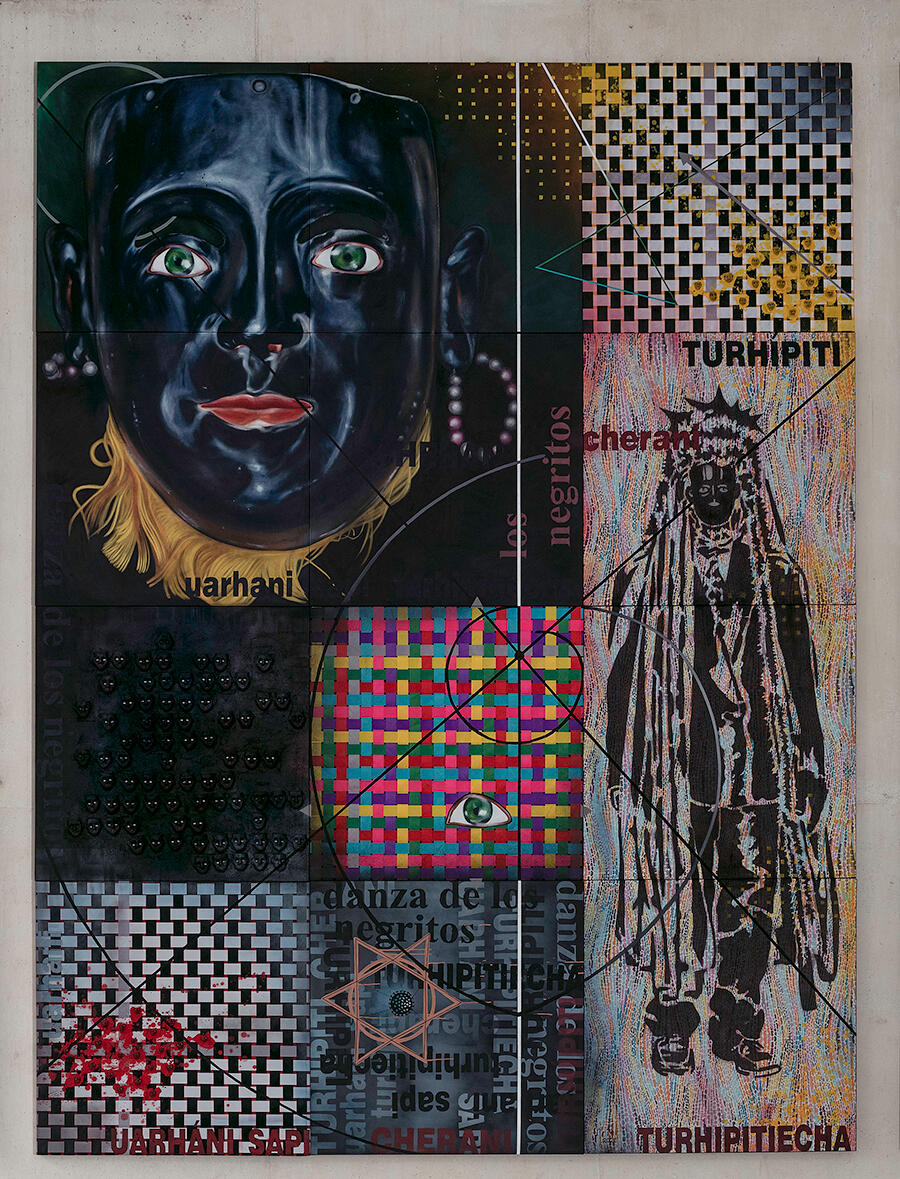Colectivo Cherani Blends Art with Real Political Action
At the University Museum of Contemporary Art (MUAC), Mexico City, the art/activism group presents a large installation in support of Indigenous rights
At the University Museum of Contemporary Art (MUAC), Mexico City, the art/activism group presents a large installation in support of Indigenous rights

While much attention has been paid to the vast criminal organizations based in Mexico that manufacture illegal drugs for export – corrupting and destabilizing governments in the process – less well documented is the toll their presence takes on those living in their shadows. In northern Mexico, for instance, cartels routinely kidnap and ransom vulnerable migrants from elsewhere in Central America; further south, in the state of Michoácan, criminal organizations have insinuated themselves into avocado farming through extortion and violence. With avocado plantations requiring clear-cut land and abundant water, clandestine groups illegally began to log the high-altitude pine forests that anchor the hillsides. Such expropriative tactics plainly redound to some at the expense of others and threaten to decimate the country’s interdependent ecosystems.

By 2011, the situation in Michoácan had become untenable for the Purépecha community of Chéran. The Indigenous pueblo of some 20,000 people has long relied on the forest to sustain them. That year, the Chérani re-asserted control of their town and surrounding territory – beating back loggers, planters and the Mexican government – establishing collective governance, led by neighbourhood groups and a high council. They also founded an eponymous cultural centre, the home base of an intergenerational group of artists known as Colectivo Cherani, who work in a range of media with an agitprop flair.
Five members of the Colectivo – Betel Cucué, Giovanni Fabián, Huaroco Rosas, Ariel Pañeda and Alain Silva – were invited by the University Museum of Contemporary Art to create an in-situ work in the airy atrium space. There is little wall text, but the panels coalesce into a single suite of towering icons surrounded by large benches suited to panoramic viewing. Each of the larger tableaux comprises many smaller panels, alternately printed, woven or richly built up from resins and found objects. In this sense, there is heterogeneity and continuity of form and style both within and among the works. While individual labels are printed on a bank of windows below, they are easy to miss, giving the sense that the Colectivo is more like members of a jazz ensemble taking turns soloing over a collective groove.

The vibe is one of psychedelic pop, with DayGlo colours splashed throughout and massive evocations of zoomorphic deities and arboreal sinews. Stylistically, the Colectivo’s installation appears inspired by the street art seen throughout other regions with strong Indigenous activism, such as Oaxaca, which blends together bold graphic approaches – woodcut, stencil, etc. – with political slogans to great effect. Here, the work mediates cultural and ecological dislocations in an iconography inscrutable (though no less captivating) to an outside viewer. Nevertheless, there’s a prevailing sense of the sinister machinations afoot in the forests of Michoácan, seen in the recurring machetes, wood-framed hatchets and visages of pained farmers amid floating inscriptions of muerte (death). Animal pelts and small skulls mounted in clear acrylic feel at once macabre and talismanic.

While more explanatory material would have been a welcome way of initiating audiences into the project’s stakes, the panels potently combine mournful energy with material dexterity on their own terms. Fabián’s Genealogia, autónoma atemporal (Genealogy, Timeless Autonomous, 2021) is rendered in oil, tar, resin and enamel. Its bubbled surface – a cosmic slurry – is inlaid with radiant branches supporting smaller figures: cacti, shadowy vicars and campesinos in traditional garb. The intricacy of Fabián’s composition calls to mind the ecclesiastical art of the northern renaissance. But to step back and take in the sweep of the whole is to witness a hyper-local iteration of a larger, global current of Indigenous artists resisting extractivist and kleptocratic systems by merging old and new into a stirring futurism. In this way, the Colectivo has blended art and real political action into a layered blueprint for things to come.
Colectivo Cherani's ‘Uinapikua’ is on view at the University Museum of Contemporary Art (MUAC), Mexico City, until 3 July 2022
Main image: Colectivo Chérani, ‘Uinapikua’, 2022, exhibition view. Courtesy: the artists and MUAC, Mexico City
























